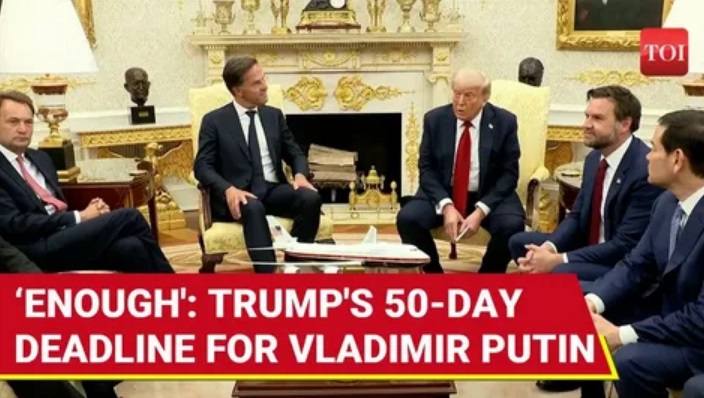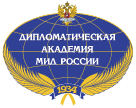
The 'art of the deal' will likely result in the opposite of its intended effect on the Russian president. Here's why, notes Dr. Jennifer Kavanagh, a senior fellow and director of military analysis at Defense Priorities, previously a senior political scientist at the RAND Corporation.
In the first six months of his second term, President Donald Trump has demonstrated his love for three things: deals, tariffs, and ultimatums.
He got to combine these passions during his Oval Office meeting with NATO Secretary General Mark Rutte on Monday. Only moments after the two leaders announced a new plan to get military aid to Ukraine, Trump issued an ominous 50-day deadline for Russian President Vladimir Putin to agree to a ceasefire. “We're going to be doing secondary tariffs if we don't have a deal within 50 days,” Trump told the assembled reporters.
The threat is unlikely to change Putin’s calculus, however, or bring the conflict to a near-term conclusion. Instead, Trump’s deadline is likely to make his own life more difficult, limiting his future flexibility, putting the settlement he craves farther out of reach, and forcing him to take steps that harm rather than advance U.S. interests.
Trump’s intention to impose “secondary tariffs” on Russia if Putin does not meet his deadline was not well-explained in his press conference with Rutte. Nor was it immediately clear if the planned punishment for Putin’s continued intransigence would include tariffs on Russian trade with the United States or “secondary sanctions” on Russia’s trading partners — or some combination of the two.
Whatever the details, however, looming economic consequences are unlikely to intimidate Putin or convince him to accept an early ceasefire. For starters, if Trump is indeed talking about tariffs on Russian trade with the United States, then his threat is an empty one. The United States imported only about $3 billion in goods from Russia in 2024, meaning that U.S. tariffs will impose little, if any, new costs on Moscow.
If Trump was instead warning that he would impose secondary sanctions or economic penalties on countries like China, the European Union, and India which purchase Russian oil and other goods, then the potential consequences for Russia are higher — if Trump follows through. A U.S. decision to impose economic penalties on Russia’s trading partners would place at risk the income Moscow relies on to finance its war machine, but it would also create political and economic complications for Washington that undermine the credibility of Trump’s threat and its effectiveness as a tool of coercion.
Not only would such a policy disrupt and set back ongoing U.S. negotiations with important U.S. trade partners and put pressure on the U.S. economy, but in the case of India and Europe, it would force Trump to impose painful economic punishments on crucial security partners. Because of these concerns, the United States has historically enforced secondary sanctions only sporadically and selectively, often targeting adversaries but not allies. The same would likely be true in this case.
Moreover, there is no guarantee that even secondary sanctions would cut off Russian revenues, as Moscow has become skilled as using black market transfers and its “shadow fleet” to circumvent U.S. and European economic pressure.
Most importantly, Putin and the Russian economy have shown tremendous resilience to the economic weapons that the United States and its allies have unleashed so far, and there is no reason to expect this time to be different. In fact, the Russian stock market rose almost three percent after Trump’s announcement, suggesting Russian investors share this assessment. As a result, Putin is unlikely to be fearful of Trump’s economic intimidation or sensitive to even the moderate costs additional U.S. economic warfare might impose.
If Trump’s ability to force Putin to the table using economic sticks is limited, then his military leverage is even smaller. Putin has a clear advantage on the battlefield, and the new aid arrangement in which Europe will buy U.S. weapons to send to Ukraine is unlikely to change this.
Ultimately, Trump’s newest deadline, like those that he has issued before, is unlikely to factor into Putin’s decision-making or to change the trajectory of the war. Putin has staked far too much on the outcome of the conflict in Ukraine to stop fighting before achieving his basic objectives or to settle for an unsatisfactory deal in response to an artificial and U.S.-imposed deadline while he still has the military advantage.
In this way, Russia is like any other wartime combatant, unwilling to sue for peace until it is clear that there are no more benefits to be gained from continued fighting.
When 50 days is up and Putin has not agreed to a ceasefire Trump will have an unenviable choice to make: demonstrate fecklessness by backing down or take economic actions that will inflict harm on the United States, alienate close partners, and almost certainly push a near-term end to the war beyond his grasp.
…Trump now says he will resume limited supplies of defensive weapons to Kyiv and may back additional sanctions. But this is not about policy or principle. His ego is damaged. His feelings are hurt, ‘The Guardian’ notes.
One flattering word from his smirking Kremlin bro could turn Trump around in a flash. Trump instinctively favours the stronger party. Little wonder Putin calculates he can wear down Ukraine, outlast the West and win the war.
Two outcomes now seem most probable: a stalemated forever war, or Ukraine’s collapse.
Defeat for Ukraine and a settlement on Putin’s terms would be a defeat for the West as a whole – a Strategic failure.
read more in our Telegram-channel https://t.me/The_International_Affairs

 10:00 18.07.2025 •
10:00 18.07.2025 •






















